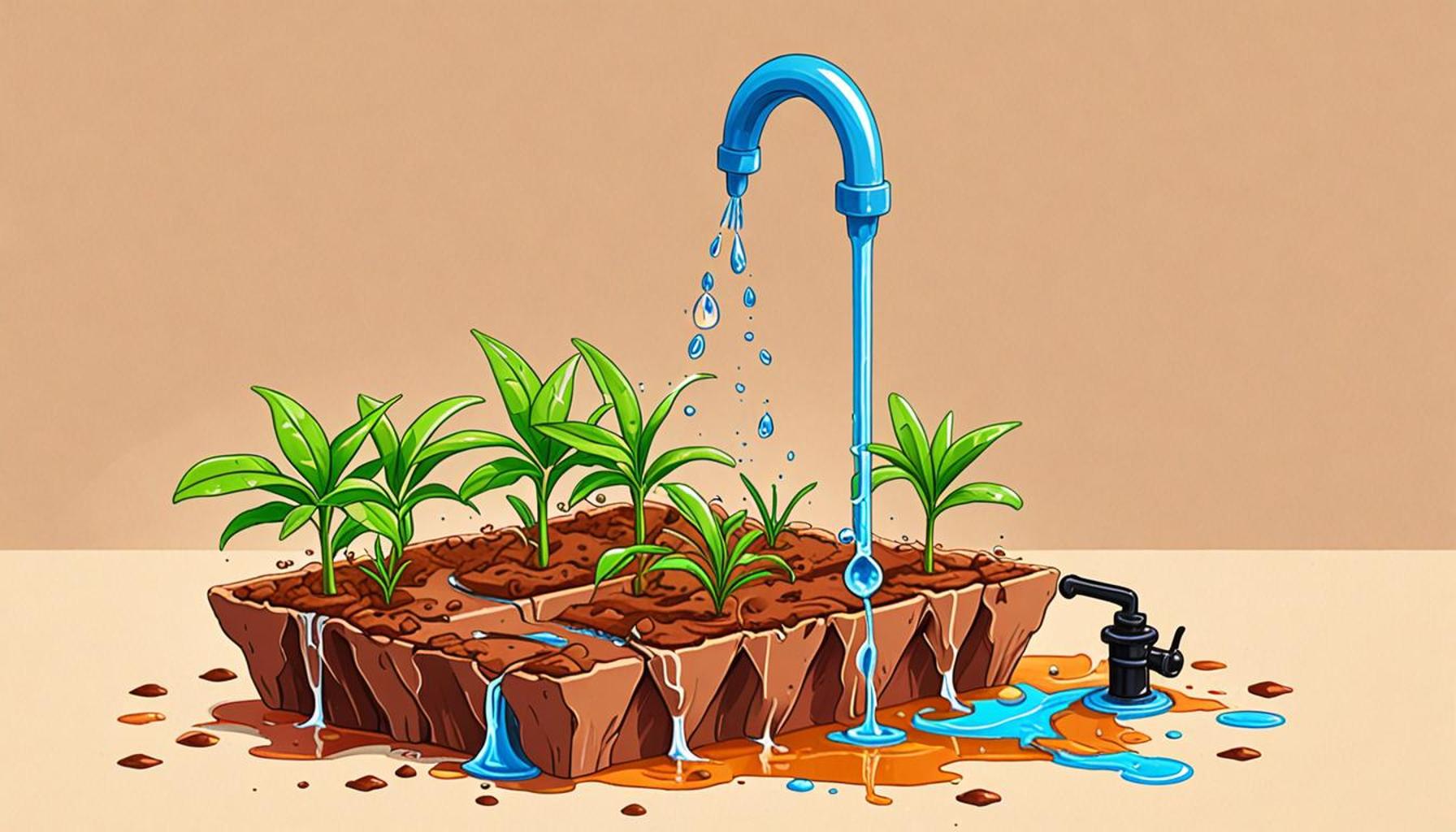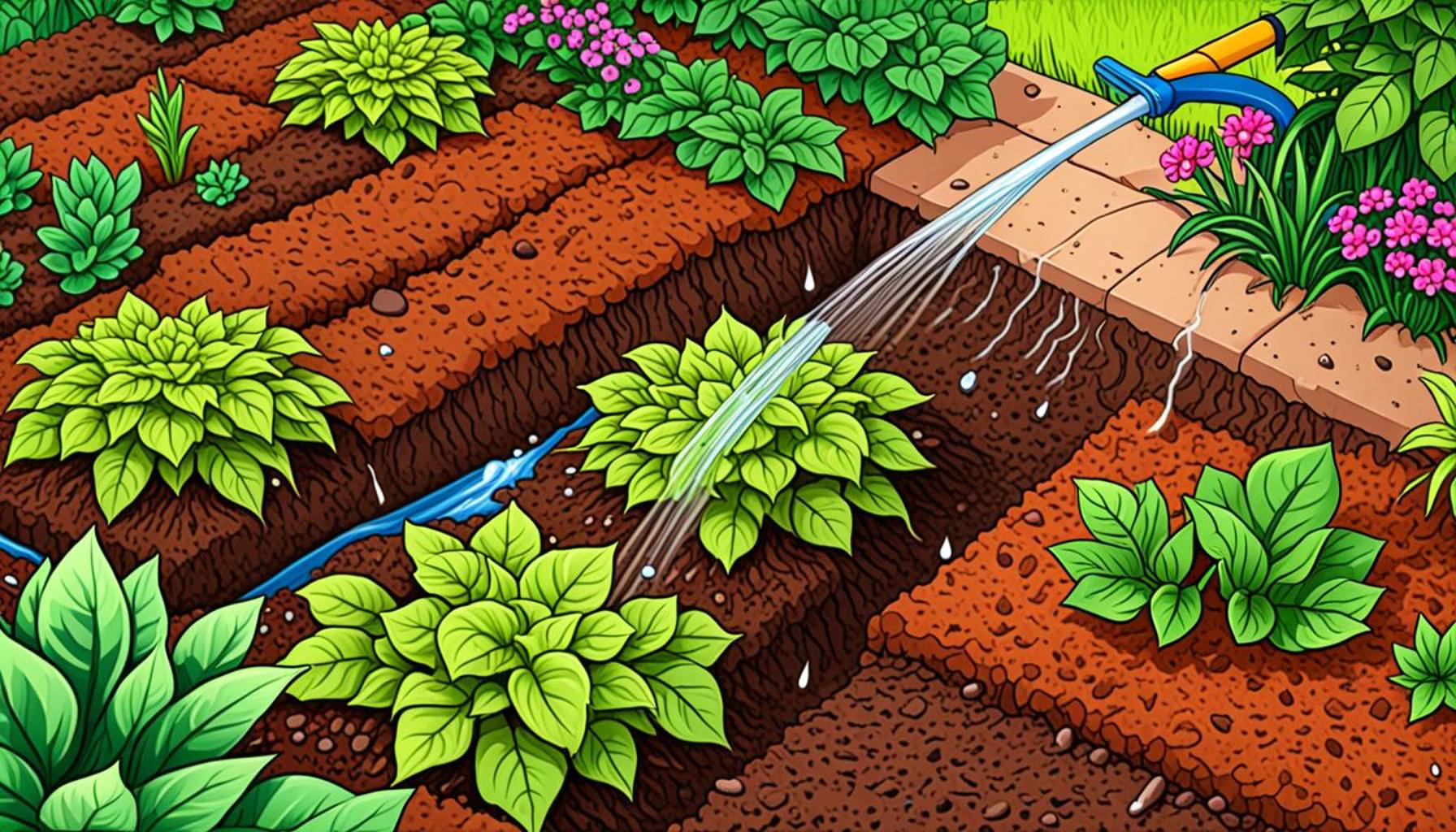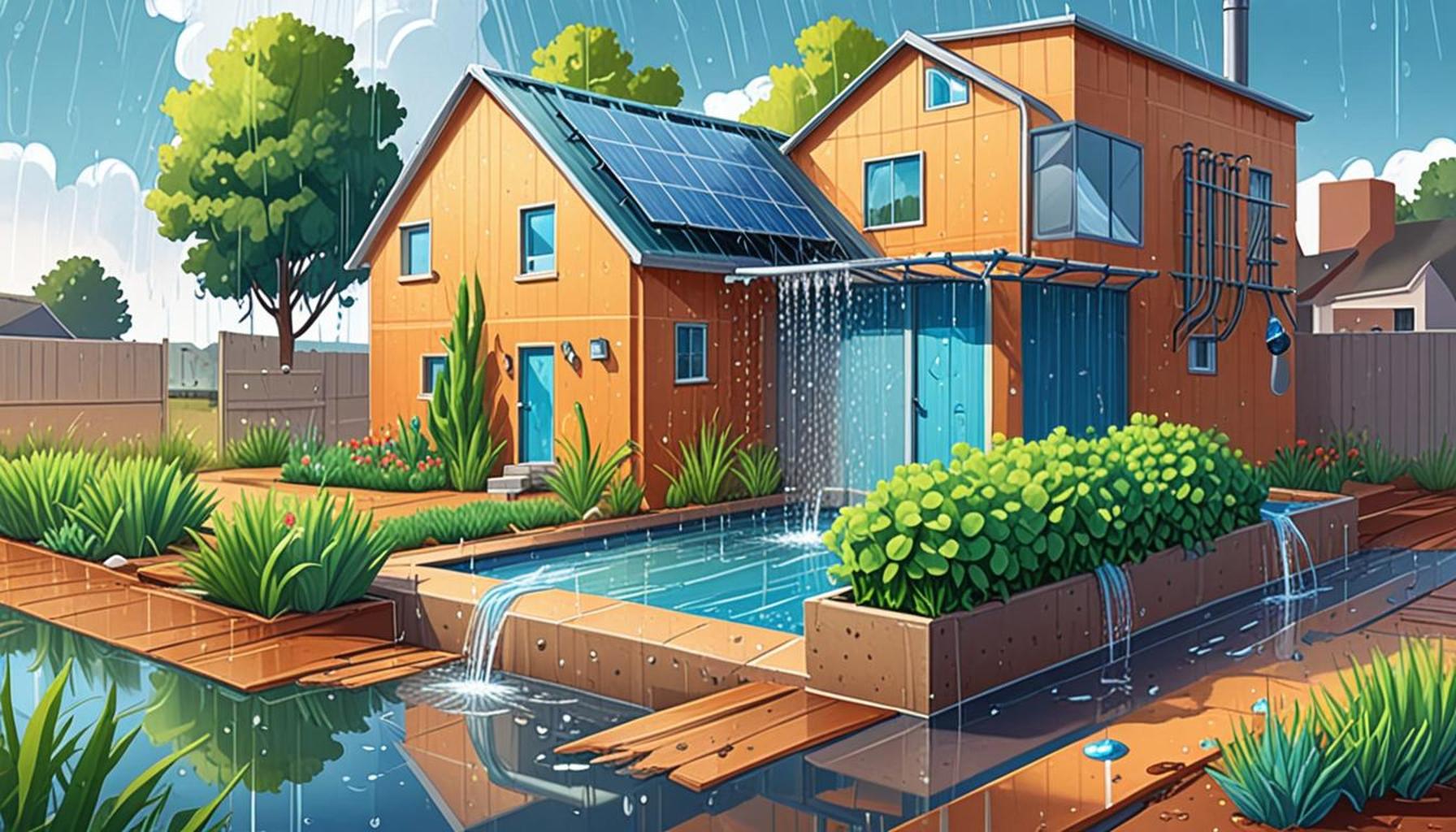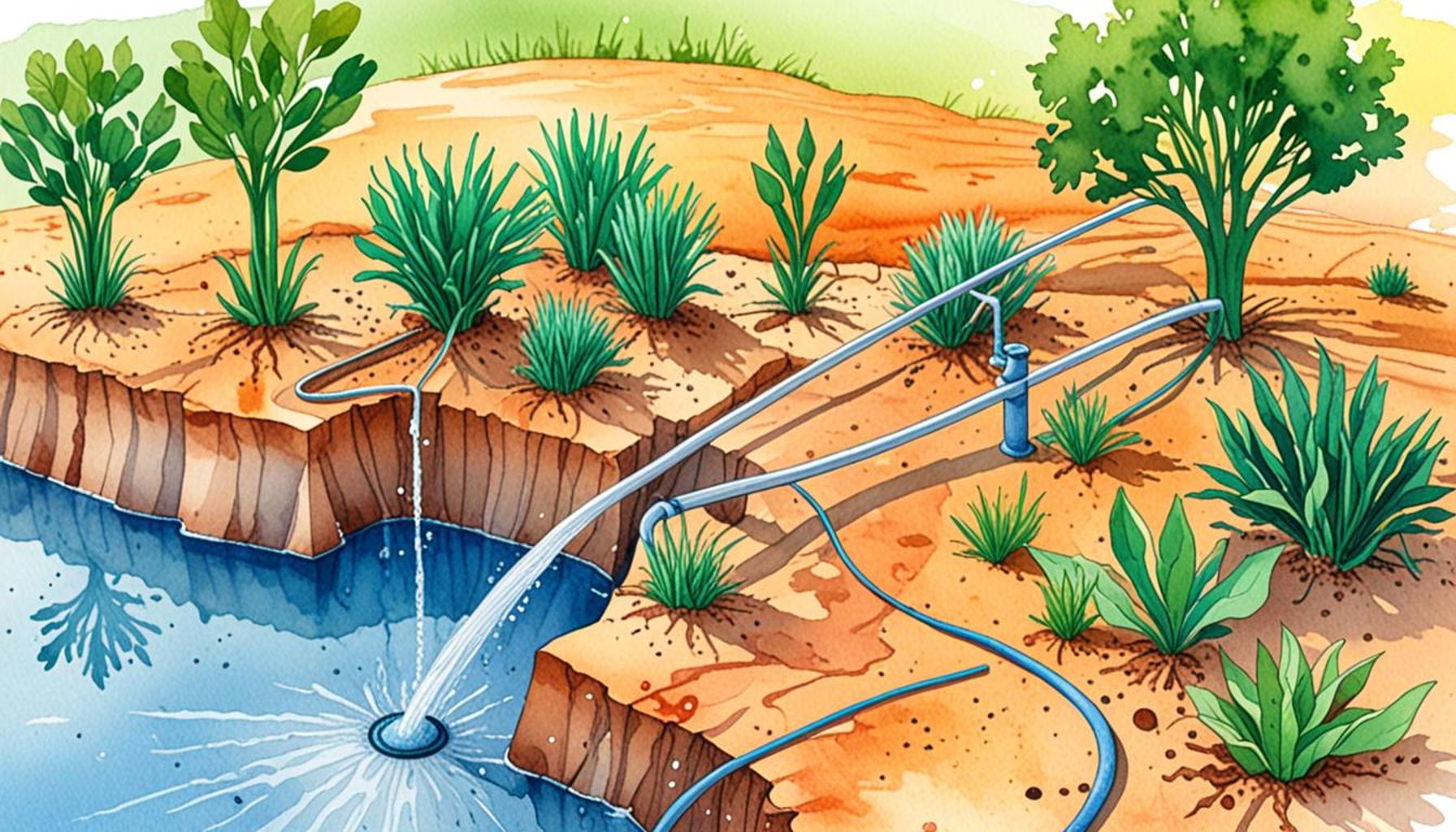Irrigation Techniques for Beginners: How to Use Drip Method to Save Water

The Benefits of Drip Irrigation
In an era where every drop counts, the drip irrigation method emerges as a game-changer for both large-scale agricultural operations and backyard gardens. This innovative technique not only conserves water but also enhances plant growth by delivering moisture directly to the roots, thus maximizing efficiency and effectiveness.
Understanding Drip Irrigation
At its core, drip irrigation comprises a network of tubes, pipes, and emitters that release water slowly and steadily into the soil. This system allows targeted watering, ensuring that roots receive adequate moisture while keeping other areas dry. The setup can be customized to suit various garden layouts, whether you’re cultivating a sprawling vegetable garden or a few potted plants on a patio. Additionally, modern advancement has led to the introduction of smart technologies, such as automated timers and moisture sensors, making it easier for gardeners to maintain optimal watering schedules.
Advantages of Drip Irrigation
- Efficient Water Use: Traditional irrigation methods, such as sprinklers, can lead to significant water loss through evaporation and runoff. Drip irrigation minimizes this waste by delivering water directly to the plant’s roots, where it is needed most. According to the USDA, drip irrigation can reduce water usage by up to 70% compared to conventional systems.
- Reduced Weed Growth: By concentrating moisture around the plant base, drip irrigation limits the water supply to weeds. This not only reduces competition for resources but also lessens the need for herbicides, creating a more eco-friendly gardening approach.
- Lowered Disease Risk: With drip irrigation, foliage stays much drier than with sprinkler systems, thereby reducing the chances of fungal infections and other diseases caused by excess moisture on leaves. This is particularly beneficial for crops like tomatoes and cucumbers, which are susceptible to blight and other illnesses.
The adaptability of drip irrigation systems extends beyond home gardens. Many large-scale farms across the United States are implementing these efficient watering practices to cope with increasing water scarcity and stringent regulatory measures. For instance, California, a state notorious for droughts, has seen a surge in the adoption of drip irrigation techniques, helping farmers conserve water while sustaining their crops.
Getting Started with Drip Irrigation
For beginners, setting up a drip irrigation system may seem like a complex task, but it can be broken down into manageable steps. First, assess your garden’s layout and determine the optimal placement of your emitters. Different types of emitters, such as pressure-compensating or non-pressure-compensating, are available based on your garden’s needs. Next, plan the tubing network to connect the water source efficiently. With a plethora of kits available at local gardening centers or online, creating your custom drip irrigation setup can be both cost-effective and rewarding.
As water conservation becomes increasingly critical in our changing climate, embracing methods like drip irrigation not only aids in maintaining healthy plants but also contributes to the broader goal of sustainable gardening. By implementing these systems, gardeners of all skill levels can cultivate their plants with confidence and responsibility, paving the way for a greener future.
DISCOVER MORE: Click here to learn about essential gardening tools
Essential Components of a Drip Irrigation System
Before delving into the setup of your drip irrigation system, it’s vital to familiarize yourself with the essential components that make this method effective and efficient. Understanding these elements will empower you to select the appropriate parts for your garden, ensuring optimal water delivery to your plants.
Key Components
- Main Supply Line: This is the primary tubing that carries water from your source to the various parts of your garden. Depending on the size of your setup, you may use half-inch or three-quarter inch tubing. Choosing the right diameter is crucial for maintaining sufficient water pressure throughout the system.
- Emitters: Emitters, also known as drippers, are the heart of the drip irrigation system. They release water in specific amounts directly to the plant roots. You can find various emitter types designed for different flow rates—typically ranging from 0.5 to 2 gallons per hour—allowing you to customize water delivery according to the needs of your plants.
- Connectors and Fittings: These small but significant pieces link the main supply line to your emitters, allowing for flexibility in your layout. Couplings, elbows, and tees help you navigate around obstacles in your garden. Having a selection of connectors on hand will aid in creating a tailored setup.
- Filter: Installing a filter ensures that your system remains free from debris and particles that can clog the emitters. Regularly cleaning or replacing the filter is essential for maintaining optimal flow and efficiency.
- Pressure Regulator: Many residential water supplies have high pressure, which can damage drip systems. A pressure regulator helps maintain appropriate pressure levels within the system, providing a consistent and effective water release.
As a beginner, investing time to understand these components can save you from future headaches. With many drip irrigation kits available online and at local garden centers, it’s straightforward to gather these essential parts. Be sure to research kits that suit your garden’s size and layout, as this will take much of the guesswork out of setting up your system.
Planning Your Drip Irrigation Layout
Once you’ve acquired the necessary components, the next step is to plan your drip irrigation layout. Start by taking measurements of your garden space and identifying your plants’ specific water needs. For example, certain plants, like succulents, require less frequent watering compared to leafy greens, which thrive on more moisture. This understanding will guide you in determining emitter placement and flow adjustments.
Don’t hesitate to incorporate moisture sensors. These handy gadgets can monitor soil moisture levels, allowing your system to operate more efficiently, ultimately saving water. By investing the time upfront in planning, you can create a customized drip irrigation system that promotes healthy plant growth and conserves water effectively.
Irrigation Techniques for Beginners: How to Use Drip Method to Save Water
When it comes to efficient irrigation, the drip method stands out as an innovative solution, especially for beginners looking to conserve water. This technique delivers water directly to the soil around the roots of plants, which minimizes evaporation and runoff. Understanding the key advantages of this method can empower novice gardeners to adopt sustainable practices that not only benefit their plants but also the environment.
| Category | Benefits |
|---|---|
| Water Conservation | The drip method can save up to 50% more water compared to traditional methods |
| Plant Health | By delivering water slowly and directly to the roots, plants receive consistent moisture, promoting stronger growth. |
Additionally, implementing a drip irrigation system often leads to enhanced nutrient uptake. Placing fertilizers can be done through the same system, allowing for a more effective and controlled nutrient application. Thus, you are not just saving water but also investing in healthier yields and stronger plants.
For those new to gardening, setting up a drip irrigation system might seem intimidating, but many beginner kits are available that simplify the process. These kits typically come equipped with everything you need, including hoses, emitters, and connectors, making it easier than ever to start your journey towards efficient irrigation.
As you explore the myriad of benefits offered by the drip irrigation technique, consider how it can transform your gardening experience while also being mindful of water conservation efforts. This is particularly important in areas facing water scarcity.
LEARN MORE: Click here for essential harvesting tips
Installing Your Drip Irrigation System
With a clear plan in hand, the next step is installing your drip irrigation system. While it may seem daunting, most homeowners find that setting up a drip system is straightforward, requiring minimal tools and a little elbow grease. Here’s a step-by-step guide to help you with installation.
Step-by-Step Installation Process
- Prepare Your Garden: Begin by clearing the area where your plants are located. Remove any debris, existing weeds, and obstructions. This not only makes the installation easier but also ensures your plants can thrive without competition for resources.
- Lay the Main Supply Line: Start laying the main supply line in the planned layout. Use stakes or garden pins to secure the tubing in place, ensuring it follows the contours of your garden bed. This primary line will be the backbone of your irrigation system, ultimately distributing water efficiently to each emitter.
- Install Emitters: Next, insert the emitters into the main supply line, positioning them according to the specific water needs of your plants. Many emitters come with pre-punched holes, but if you need to create new spots, a simple emitter punch tool will help. Be sure to space the emitters appropriately—typically, six to twelve inches apart, depending on your plant types.
- Connect Fittings: Utilize the connectors and fittings to make any necessary bends or turns in your system. This flexibility allows you to navigate around obstacles and maintain an organized layout that suits your garden’s design.
- Install a Filter and Pressure Regulator: Following the main supply line installation, connect a filter to keep particles from clogging the emitters. Also, install a pressure regulator to ensure that water flows gently, preventing any potential damage to your system.
- Test the System: Before covering the tubing or finalizing the installation, run a test to check for leaks and ensure all parts are functioning correctly. Adjust emitters if they aren’t providing adequate coverage, and take the opportunity to make sure water is evenly distributed across all plants.
Maintenance Considerations
Once your drip irrigation system is operational, maintaining it is essential for long-term efficiency. This includes regularly checking for clogs in emitters by removing them and flushing them with water. It’s also crucial to monitor the filter, cleaning it periodically to avoid blockages. Seasonal checks are beneficial to address any freeze damage, especially in areas with harsh winters.
Furthermore, consider the changing needs of your plants as seasons shift. Crop rotation or planting new types may require adjustments to emitter output or positioning. Keep yourself informed about the plant types you’re growing; some may have fluctuating water requirements as they mature or enter dormancy.
Water Savings and Environmental Impact
Embracing the drip method not only brings efficiency to your gardening routine but also contributes to substantial water savings. Studies indicate that drip irrigation can reduce water use by up to 60% compared to traditional methods, significantly lessening your garden’s water footprint. This method delivers moisture directly to the base of plants, diminishing evaporation and run-off—key factors in effective irrigation.
For beginners looking to implement sustainable practices in their gardening journey, the drip irrigation system is an ideal choice. By watering smarter, you become part of a larger effort to conserve water resources while still enjoying a flourishing garden.
DISCOVER MORE: Click here for insights on harvesting fruit at the right time
Conclusion
In conclusion, adopting the drip irrigation method is a practical step for beginners aiming to create a thriving garden while conserving water efficiently. By utilizing this technique, you can ensure that your plants receive just the right amount of moisture directly at their roots, minimizing water waste due to evaporation or runoff. This targeted approach not only promotes plant health but also significantly decreases your gardening water consumption—potentially by as much as 60% compared to traditional watering methods.
As you embark on your drip irrigation journey, remember that the installation process is accessible and manageable, requiring only basic tools and careful planning. The ease of maintaining a drip system further adds to its appeal, making it a sustainable choice for all gardeners, whether you’re tending to a small backyard patch or a broader landscape. Regular checks on your system will ensure longevity and efficiency, aligning with both your gardening goals and environmental responsibilities.
Your commitment to sustainable gardening practices contributes to a larger ecological movement, aiding in the preservation of valuable water resources. As climate conditions fluctuate and water becomes an increasingly scarce resource in many regions across the United States, employing techniques like drip irrigation becomes essential. Embrace this method not just for the immediate benefits to your garden, but as a part of a collective effort to conserve our planet’s resources for future generations. Explore further information, engage with your gardening community, and let the drip irrigation method transform your gardening experience into a more efficient and eco-friendly endeavor.


